Rising Star: Mason Alexander Park on the power of ‘Hedwig’ and authentic representation
Mason Alexander Park on how they bring new authenticity to Olney's Hedwig, and the late-night tweet that changed their career

“What would you want to do here, if you ever came back?”
Jason Loewith, artistic director of Olney Theatre, posed that question two years ago to Mason Alexander Park. At the time, both crowds and critics had been raving for months about Park’s performance in Olney’s Cabaret. “Park is an endless delight as the Kit Kat Klub’s provocative, gender-fluid Emcee,” wrote Metro Weekly theater critic André Hereford.
The role would earn Park their first nomination for a Helen Hayes Award, which ultimately became their first win, as Outstanding Lead Performer in a Musical. “I am very grateful for that production, and I’m very grateful for Olney having taken the time to really put a lot into that show, which paid off,” Park says.
So when Loewith posed his question, Park knew exactly what would lure them back to the leafy artistic oasis in suburban Maryland.
“I had always wanted to do a very pared-down version of Hedwig,” Park says, “to return her to her off-Broadway roots.” Park had previously spent more than a year on the road with the national touring production of Hedwig and the Angry Inch, including serving as standby for actors including Darren Criss and Euan Morton.
“The tour was one of the most electrifying and incredible experiences of my life,” says Park. “It was so much fun, and so incredible, and so amazing.” Still, there was an obvious disconnect between that production and the script’s down-at-heel diva barely scraping by. As Park explains, “You had to suspend some sense of disbelief in order to fully throw yourself into that version of the show. ‘Oh, my God: These are $40,000 clothes. And the shoes were made by Madonna’s cobbler!’
“I wanted to have an experience with her that felt a little jankier, and to revisit the show and see what else we could pull out of it and how we could mess her up a little bit, and modernize her. Olney was the perfect place to debut it, especially after the amazing experience I had doing Cabaret.”
A few months later, however, the pandemic wreaked havoc on any such plans. The pandemic also prompted Park to shift their focus away from the stage and pursue work in television. First, they landed a role as a recurring character in Netflix’s live-action adaptation of the anime caper Cowboy Bebop. They also managed to get cast as a supporting player in another highly anticipated Netflix adaptation, Neil Gaiman’s The Sandman.
“It wasn’t looking like [Hedwig] was going to really be able to happen after that,” Park says. “Then, thankfully, I had a break from Bebop and Sandman at the exact same time, and I guess [Olney] felt they could bring it back. So it all lined up.”
It would be hard to overstate the impact that Hedwig has had on Park, in terms of both their life and their career, and as a person and a performer. They find it thrilling they can refer to both of Hedwig’s creators — John Cameron Mitchell and Stephen Trask — as friends and colleagues, as well as supporters of their work in portraying the character. It’s a character that Park feels especially connected to as someone who identifies as transgender and nonbinary — something they also think adds something special to the new production. “My identity definitely colors the experience that I have, and hopefully that the audience has, in an even more nuanced way.”
Over the years, tattoos have become an increasing passion and distinguishing feature of Park’s. “My tattoos are a chance for me to almost timestamp certain things that I’ve gone through, certain things that I’ve experienced,” they explain. “A lot of them are people, and roles in shows. If anybody gets close enough, there’s a whole story.”
One tattoo, visible in Cowboy Bebop, has caused a bit of a stir online among inquisitive viewers. As Park amusingly retells one posted query: “Oh, my God. What is this thing? They have the word gender with a strikethrough on it, right by their collar bone.”
Wouldn’t you know it, but the whole story to be told through Park’s tattoos — currently numbering, they guess, at “somewhere between 25 and 30” — starts with a familiar face. “The one on my wrist is a Hedwig tattoo. It was the very first tattoo I ever got. Now, I have two or three tattoos that I would classify as ‘Hedwigian.’ The show means a lot to me.”

METRO WEEKLY: Let’s start with Hedwig, and the role that she has played in your life.
MASON ALEXANDER PARK: Hedwig really was a fundamental piece of theater and film, and a fundamental text in my journey as an artist, but also my journey as a nonbinary person. It was the first time that I had ever really seen a character on stage, or on screen, that reflected the complicated nature of my own gender identity, and who was fighting against certain social constructs, especially the binary. It’s rooted into this entire show in a way that was really groundbreaking in the ’90s. I think that aspect of the musical was overlooked by a lot of people.
Stephen [Trask] was writing about how Hedwig was in between two worlds, and how she was a creature and a gender of her own, in a really creative way. John [Cameron Mitchel] and Stephen created this beautiful little time capsule of nonbinary-ness that I discovered when I was in high school. It was a big reason why I ended up pursuing musical theater in college, as opposed to staying in Los Angeles and continuing to do film and television work, which is what I had been doing up until then. It gave me the kick in the pants to be like, “There are challenging roles in the theater world for people that are gender non-conforming, or at least have an interest in exploring that in our work.” It opened a lot of doors for me.
Of course, I was hoping that one day I would be able to do it, probably at a regional theater for the first time. The day after my senior showcase in New York City, I went to an open call for the Broadway version of the show, and ended up getting it. I toured with Hedwig for a little over a year. That was the start of this whole journey for me.
MW: As you say, it was ahead of its time. Yet all these years later, we still refer to Hedwig using she/her pronouns. The question is, should we?
PARK: When revisiting the show, we had the opportunity to update the way that we refer to Hedwig. But part of the structure of the script is Hedwig fighting against the various forced genders that she’s had to experience in her life. She wasn’t quite a boy, and then she wasn’t quite a woman. She’s still going on that journey on the night that you see her. At least she’s speaking about it in a way that she doesn’t just adopt they/them pronouns and call it a day. There still has to be some moment of self-acceptance towards the end, and really figuring out how to be comfortable being both, and being neither, and being somewhere in between.
It’s important to maintain the way that she spoke about herself in the ’90s, using the she/her pronouns. Also, it really works for the aspects of her identity that are put on, that are performance art, that are drag. In the same way that there are so many trans drag artists now that go by various pronouns but still, when they’re in drag, prefer she/her pronouns.
Plus, pronouns are no indication of nonbinary-ness. There are so many nonbinary people that still utilize she/her or he/him pronouns as opposed to using neutral pronouns like I do.

MW: When did you realize that the gender-neutral pronoun was best for you?
PARK: I started heavily using it about four or five years ago. I was one of those people that was like, “You can call me whatever you want, as long as you call me.” I used pretty much all pronouns for a while. It was an interesting social experiment to see what people pick when they talked about you. It still felt very gendered. Within it, I still felt very unseen because a lot of people were heavily leaning on my old pronouns and it felt like an excuse to not have to adapt or change in any way.
About a year later, I decided that I was tired of worrying about the comfort of other people. I think accepting all pronouns was to make other people comfortable with my presence, and my experience, and not feel like they have to work super hard. I was like, “It’s not that hard.” It isn’t actually a lot of work. It requires some mental calibration.
I’m not a burden, so I should use the pronouns that feel the best to me — they/them pronouns. So I made that an official switch and stopped necessarily focusing on the comfort of those around me, and more so on the respect and the totality of my identity in social situations.
MW: Do you feel people treat you with respect in regard to your pronouns?
PARK: That is such a loaded question. Yes and no. The people closest to me in many ways, yes. But I’m also one of very few trans and nonbinary artists that are in any semblance in the public eye at all. Because of that, and because of how politicized our identities and our bodies are at this moment in time, it’s really hard to say that I have been treated entirely respectfully. In some ways, and in some workplaces, yes. But for the most part, the opposite is also true, if not more so. There’s a lot of hate in the world. And misunderstanding, and lack of desire to actually take a minute to understand why we fight so hard against things that do or do not really affect us.
Being a character on two large-scale genre television shows draws in a lot of eyes, and especially a demographic of people that may or may not normally have been introduced to me. It’s a much wider audience. Because of that, there are a lot of people that may not agree with my existence as a human being, which is really wild and shocking to me that there are still human beings that are up for debate in 2021. But trans people are first on the list. You can see it in our legislation and you can see it with J.K. Rowling, and so many examples.

MW: Getting to perform Hedwig every night provides a way to release some of the tension and frustration, I would imagine.
PARK: Yeah, that is the beauty of the show. We were in the middle of tech when Cowboy Bebop aired. A lot of people had a lot of things to say about my existence during that time frame. There was a lot of internet noise, a lot of internet chatter. I definitely used Hedwig to channel a lot of that excess energy and pain.
There are so many actors who feel like they can relate to it and really understand it. But I was talking to our director, Johanna McKeon, about a very specific moment in the show, which is centered around a primary relationship in Hedwig’s life, with a boy named Tommy Gnosis. Towards the end of the show, there’s a really intense moment that I think a lot of actors have played a very specific way. I’m one of the few Hedwigs, if not the only Hedwig, in the lineage of the Broadway show and tour that is a trans person. I remember talking to Johanna about how, with that moment alone, my version of the show is radically different because of my own experiences, and having had that conversation play out in real life. It’s not a theatrical moment for me, or a theatrical retelling, or a cis white guy’s version of what a trans person might experience while being rejected because of their body.
It’s moments like that in the script that give me a lot to put myself into, and to put whatever is going on in my day-to-day into. That’s been very helpful, especially in a really, really interesting time when my body, and my image, and my identity has been so hyper-focused on and scrutinized by certain people and certain communities, in a way that is deeply uncomfortable.
That storyline is the most linked to actual trans-ness, to the trans experience. There are a lot of themes in the show, and there was a lot in the show that, I think many people who have played it can bring their lived experience to it.The beautiful thing about the show is that it’s very universal. It’s packaged in a very specific way, but Hedwig is a character that everyone should be able to connect with as an audience, and see themselves in because it’s about the fundamentals of identity, self-discovery, and love. The search for love, and the search for love within yourself, and outside of yourself.
So for me, I feel like that is probably the most specific moment that I can think of that is so unique, at least to the trans experience, that I know for a fact. Most of my male counterparts that played the part have not had to have that conversation in their lifetime. They have never had to discuss that.
I guess the end, the release of the drag, or the release of performative gender, the release of the binary in “Midnight Radio,” is something that I’ve seen so many people do beautifully. But I do think that there is something to seeing a trans person standing there in their underwear, pretty much, just singing a song about love, and about community, and about those that came before, and those that have yet to come.
It does carry a different weight when you know that, stripped bare, that person you’ve been watching for an hour and a half is of this world, and of this experience, and isn’t just a famous cis actor that put on a lot of makeup and pretty wigs, and killed it for an hour and a half, as many of them did. The second all that drag comes off, it’s very clear that he gets to walk off the stage, and walk through the comfort and the safety of the world in a very different way than someone like me who still carries Hedwig with them every single day, and still has the lived experience of that person, pretty much, every single day. Someone who still gets called names, and still gets misgendered everywhere, and still gets looked at strangely because people can’t tell what you are. It is something that I cannot just leave in the theater. So the ending is another moment where my identity definitely colors the experience that I have, and hopefully that the audience has, in an even more nuanced way.
MW: We also get to meet Yitzhak, and get a glimpse into their struggles with gender identity and gender expression as well.
PARK: Yes, and another fantastic actor, Chani Wereley, who uses she/they pronouns, plays Yitzhak. Yitzhak has been interpreted in so many ways, but it’s very clear that Yitzhak is on their own gender journey, and that he has been radically stifled by his wife, by Hedwig, out of fear, both of his talent and of Yitzhak being rejected the way she was. There’s almost a protectiveness there, almost like a parent who doesn’t want to see Yitzhak end up the exact same way that she does, and is passing down the cycle of abuse that she’s experienced in her own life.
But it’s amazing to watch Yitzhak receive their freedom, and receive this release from their own binary that Hedwig has forced on them. You get to watch two people blossom into their truest selves. It is a really amazing theatrical moment, especially if you know that the people on stage have such a nuanced experience with gender, comparatively, to a lot of the people who have performed these parts in the past.

MW: Speaking of, I loved the little jab at Darren Criss, about how, as a straight actor, “he gets all the privileges of homosexuality and none of the responsibilities.”
PARK: Funnily enough, we were using that joke when I was Darren’s standby and we were doing the show in San Francisco and Los Angeles. We were like, “We should definitely dust this one off. This is a great joke.” Darren is such a good sport about it and definitely understands the nuances of the joke.
MW: There’s a point in the show where you fumble in telling a story, and go, “What was I saying? Oh, yeah. I was talking about me.” The way you deliver it, anybody who doesn’t know the show might think you were genuinely lost.
PARK: Especially people that don’t know the piece, I always want them to feel like it is happening for the very first time, because it is. This is a one-night-only event. There are aspects of her performance, of her show, that have been rehearsed, that she has drilled with the band, and drilled with Yitzhak and been like, “You bring me water here. We do this here.” They’ve clearly rehearsed the piece, but there are so many aspects of it that are improv-heavy and go off the rails.
That’s the real fun for me, because it’s really exciting to watch an audience get to experience something, and not really know what’s going on, and being like, “Oh my God, wait.” I want them to forget that they’re seeing a play. She’s real. This is a rock concert and they just happen to be seeing it. So when we get to moments like that, where you can really bamboozle people, that’s a little nugget of theatrical magic.
MW: You seem to have developed a nice relationship with the whole Angry Inch crew, the actors performing as Hedwig’s band.
PARK: The show, once it starts, nobody gets to leave the stage. It’s unlike most musicals, where there’s an intermission, or there are scene changes, or whatever. We all buckle in and just go for the ride for an hour and forty minutes. So that really helps build a sense of community because you can’t really check out. You can’t slip into the wings, and get on your phone, and a lot of the things that can pull you out of a performance. It is amazing. It’s a really cool exercise in staying present and in staying fresh. I’m really grateful for this group of people because they are all so very talented and they’re all very, very giving and attentive. I’m having a great time getting to know them.

MW: Let’s focus on your journey to Olney. It sounds like you had a rather nomadic childhood.
PARK: I moved around quite a bit. I was born at Fairfax Hospital. We spent some time in Virginia, North Carolina, Texas, Los Angeles, Pittsburgh. But L.A. was where I went to high school. It’s where I started my career in television. It’s a place that I love dearly.
MW: Was it in high school in L.A. when you first got the idea to make a career out of being a performer?
PARK: I actually got the idea when I was living in North Carolina. I received my first paycheck ever as an actor doing North Carolina Theatre’s production of Peter Pan in Raleigh. I played John Darling. I got to fly on my 13th birthday, opening night. It really was one of those magical, pinch-me experiences.
MW: And your parents were obviously encouraging of that.
PARK: Yeah, they were very supportive, and still are. They were those cool parents that definitely encouraged me to try to find the thing that I was most passionate about and spend time cultivating those interests. They were “throw whatever at the wall and see what sticks” sort of parents. So they got me involved in so many things from a very young age, including an acting summer camp when I was six. They had a feeling that that was something I would be interested in amongst the many versions of myself that I went through as a child. So when it came back around when I was 13, it was no surprise to them.
MW: How did they respond to your nonbinary identity?
PARK: I don’t think the understanding of my identity was too much of a struggle for them. That language was difficult just because you spend so much time with a version of a human being, sometimes it’s hard to routine yourself out of old habits. Most trans people will know what I’m talking about, and anyone who has experience with trans people either as parents, or friends, or lovers. Watching people evolve into truer versions of themselves is amazing. It’s an incredible, incredible experience that a lot of people take for granted, or don’t necessarily have the opportunity to see in their lifetime. But sometimes it’s hard because you hold onto the past.
In terms of any kind of difficulty, it only was of them getting comfortable using gender-neutral language and they/them pronouns. They’ve been amazing.
MW: Your start as a performer was mostly on TV, and now a decade later you’ve returned to television in a big way, with two Netflix series, Cowboy Bebop and The Sandman.
PARK: The Sandman‘s the most recent thing I completed. What a dream, that role in that show. It is “Hedwigian” to me, in the sense of how important and groundbreaking that character was when it came out, and how it ticks all the boxes off for me. Growing up, I always wanted to be the villain in things. Not that Desire is, or sees themselves as the villain by any means, but they’re a little nefarious. I’m having a great time getting to be a little antagonistic in this series.
Funnily enough, The Sandman came up around the same time as Cowboy Bebop. I was in New Zealand doing my two-week quarantine [before filming began on Bebop]. I was probably a week and a half in, losing my mind. And I remembered that a friend of mine had auditioned for The Sandman — before that she was on Neil Gaiman’s American Gods for their final season. I thought, “Okay, maybe I’ll see if they’re still auditioning,” because it was a year later. But because of the pandemic, a lot of things were put on hold. It was four in the morning in New Zealand, and I don’t know what possessed me, but I was like, “I’m just going to tweet Neil Gaiman. I’m just going to ask him if Desire’s in season one, and if they have a Desire.” And he got back to me: “This is the casting director’s information.”

MW: You didn’t know him at that point?
PARK: No, I had never met him. He didn’t know who I was. He just, I guess, saw my profile, and saw the question, and was like, “Yeah, sure. Let’s see. Let’s give this kid a hand.” He had worked with John Cameron Mitchell before. John adapted a movie, How to Talk to Girls at Parties, from one of Neil’s short stories. So Neil knows Hedwig, and knows John, but beyond that, I was a relative stranger to this person. So I told my agent to hunt it down and make it happen whenever they could. They asked me to do a tape towards the end of Bebop. So I finished shooting that day, and ran home, put on my Desire makeup and a suit, and did my self-tape with Tamara Tunie, who plays Ana opposite me in Cowboy Bebop. We did it really quickly a few times, and I sent it off. A few weeks went by, and then finally I got the call that they wanted me to do it. I didn’t end up meeting Neil until months, months, months later over Zoom. We got to talking about the show, the role, and all these things. And Twitter was one of the first things he brought up: “Can you even believe that we are here because of a tweet? It’s the greatest soundbite ever.” It’s such a fun fact.
MW: What role does John Cameron Mitchell play in The Sandman?
PARK: John plays a character named Hal. In the comics, Hal has one or two appearances in the second book. He was a drag queen that Rose Walker, who’s one of the leads of the first chunk of stories, meets and befriends. So John is playing that character in the television version, and gets some really incredible costumes that he was texting me pictures of before I got there. It’s a fun part for him.
MW: Right now people can see you in Cowboy Bebop, a live-action reimagining of the acclaimed anime. How was filming that series?
PARK: What a joy that whole experience was. It’s such a blast of a show to shoot and to watch. I’m very grateful for all the people that have seen it. And there are so many people that have loved it so much that they’ve already watched it two or three times all the way through, just in the last two weeks. So that’s really exciting. It’s impossible to please everybody with any kind of television series, but especially when it’s a beloved series that’s based on something. Everybody has a different set of expectations or desires. People either want it to be a shot-for-shot remake, or they want you to do something entirely different. There is no way that you could possibly appease every single individual when it comes to adapting any kind of material.
With this show, I think that we really struck a beautiful balance of homage and loyalty to the source material, and still finding room to modernize or shift certain storytelling, or add in fun things in order to make it fresh and make it interesting for people who’ve seen it.
I’m having a great time and I love being a part of it. I’m really grateful for all the fans, and all the people who are rallying behind it. I hope that more and more people watch and fall in love with it, and especially more and more fans of the original, because in so many ways, it is a love letter to that piece of art. As a fan of the original myself, it was a really, really cool experience to sit down and watch it all the way through for the first time, and see all the Easter eggs, and pick out all the things that were really focused on.
MW: Both shows are on Netflix. How’s your experience been with Netflix so far?
PARK: It hasn’t been the longest of relationships, but it’s been a decent year or so. Obviously, there have been some complications with certain conversations at Netflix around “transness” and around all the hot water that they got into, and deservedly so. It’s complicated when art and commerce and all of these things meet at an intersection. You have to decide what’s the responsible thing to do moving forward.
As a trans artist, continuing to work for an organization that’s having those conversations, and going through that — I have a very complicated relationship, and am trying to take stock with myself, and what I need to do for myself and my community moving forward. At this moment in time, I’ve decided that the best thing I possibly can do is continue to work for Netflix, and continue to push for better inclusion and better storytelling, continue to push for more trans and nonbinary artists behind the scenes, in front of the camera, and behind the camera. Now that I am a small part of the Netflix fabric and family, there is a desire to change it from within, as opposed to just abandoning all hope. So hopefully, my presence and my experiences as a trans and nonbinary person working for this company will help future artists like me.
I’ve already seen it on my own sets, in both The Sandman and Bebop. So I believe wholeheartedly in the future of inclusion at companies like this. It might take some time, but I’m excited to stick around and hopefully weasel my way into more projects and change some more things over at Netflix.
MW: Do you have anything on the horizon that we should know about?
PARK: I don’t think I’m allowed to talk about it, but I definitely do have some things in the works that I’m really excited about. I’m mainly excited to diversify what I do in this industry. I began writing a lot more in the pandemic. I’m in the midst of pitching and unloading a couple of different projects for film and television, and have been doing that for the last few months or so. I’m really moved and excited about all the different people that I’ve met that are so dedicated to better inclusion and representation on screen. A lot of the production companies and studios I’ve met with are really excited to meet with me as an artist.
It makes me feel very hopeful for the future, allowing people like me to tell our own stories as opposed to always leaving them in the hands of a very specific demographic. To be able to be the person that is curating and creating stories about “transness” — and not about “transness” — is going to help elevate the kinds of stories that we see about ourselves on screen. They’ll be coming from a place that isn’t just researched because someone wants to make a movie about a famous trans person. It’s coming from a place of lived experience.
I want to continue to write and create more opportunities for other queer artists to be able to have a place in this industry, and also diversify the things that they get to do as actors. Queer people, for decades, have been regulated to very specific archetypes and stereotypes in film and television. Trans people and nonbinary people are grappling with that still. I’m looking forward to the day where I can just play somebody in The Office, in a show like that, where I can just be a normal, everyday human being in a small-town television series. I can be a romantic interest in a rom-com. It’s things like that, that help normalize the experience of our existence, and of our humanity as trans and nonbinary people. People learn by seeing. We’re almost always seen either as questioning 17-year-olds in high school, or aliens and gods. There aren’t a lot of examples of trans people in normal life, hanging around, being friends with a bunch of other people. So that’s a thing that I hope to be a part of the change and rectify.
You can already see the shift with a lot of shows that are in production now, and some of the reboots of shows like Queer As Folk that are coming out, that will hopefully really help normalize a lot of our experiences in a way that isn’t super fetishized, or isn’t super male-gazey, or isn’t told only in fantasy and sci-fi genres.
MW: You’ve made reference here and there about the pandemic. All in all, how was it for you?
PARK: It was some of the highest highs of my life, and some of the lowest lows. I’m very, very grateful that I got to work at all during the pandemic. Most artists that I know did not get to say the same. I felt very privileged to be able to work on both of those shows. I met my partner, Alice Kremelberg, during the pandemic. We have been together for a while now. The show she’s on, The Sinner, finally aired its last episode, in which they were the lead of the final season. They were the final Sinner. So, we got to spend a couple of months in Nova Scotia, where Alice was shooting that show. I feel so insanely lucky to have been able to escape, through work and through my partner, to certain pockets of the world that I otherwise would not have been able to see, and especially not during a time when everything was restricted, travel-wise. It was very difficult to get us into these places. I feel very fortunate to have had any amount of good come of the last two years.
MW: The fact that you’re both actors/performers must make for some interesting as well as some challenging moments and conversations.
PARK: Yeah, it does. We had known each other for a while. We met doing an acting job. Alice was actually the one that taped my Cowboy Bebop audition with me, and I taped Alice’s Sinner audition with her. As an artist, we’re drawn to other artists, but it’s very rare to feel like the person that you’re with completely elevates the work that you do, and completely elevates you as a person. So I feel very, very fortunate that we found each other when we did, because I completely credit her with the massive seismic shift in my career that came after meeting. I’m sure she would not say the same, because she’s so freaking talented that she would be where she is without me. It is really fun to be able to do all of this stuff together, and to be able to tape all of these things together, and go home, and just loaf around, and watch TV, and talk about all the different things that we want to do. I’ve started writing for her, and for us, and for other friends of ours. So it is really, really special and I’m very grateful.
MW: When you’re not in Olney, where’s home?
PARK: Home used to be New York for both of us. Now home is a bit of a question mark. Between the three shows that we’re doing, it didn’t really make sense for either of us to be living in New York City. I had gotten rid of my place during the pandemic, before I went and shot Cowboy Bebop. It took Alice six months to film The Sinner. So she didn’t need a place anywhere other than Nova Scotia. So we’ve just been hopping around and going where the jobs are. Right now, Olney happens to be that place, so she’s here with me, and was the Associate Director on this production. She helped Johanna out with many elements of Hedwig. We’re hanging out here until this is over. God knows what’s next.
Hedwig and the Angry Inch runs through Jan. 2, 2022, at Olney Theatre, 2001 Olney-Sandy Spring Road, Olney, Md. Tickets are $59 to $85. Masks and proof of COVID vaccination are required for entry. Call 301-924-3400 or visit www.olneytheatre.org for more information.
Cowboy Bebop is available to stream now on Netflix. The Sandman is expected to premiere in 2022. Visit www.netflix.com.
Follow Mason Alexander Park on Twitter at @MasonAPark.
Read More:
Lena Waithe on ‘Twenties,’ dealing with criticism, and finding balance in dating
Trans model Isis King blazes a trail from fashion to acting
Robin de Jesús on ‘tick, tick…Boom!’ and finding power in queer characters
Support Metro Weekly’s Journalism
These are challenging times for news organizations. And yet it’s crucial we stay active and provide vital resources and information to both our local readers and the world. So won’t you please take a moment and consider supporting Metro Weekly with a membership? For as little as $5 a month, you can help ensure Metro Weekly magazine and MetroWeekly.com remain free, viable resources as we provide the best, most diverse, culturally-resonant LGBTQ coverage in both the D.C. region and around the world. Memberships come with exclusive perks and discounts, your own personal digital delivery of each week’s magazine (and an archive), access to our Member's Lounge when it launches this fall, and exclusive members-only items like Metro Weekly Membership Mugs and Tote Bags! Check out all our membership levels here and please join us today!








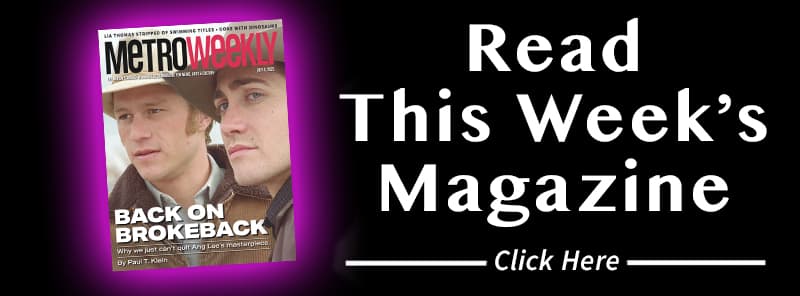
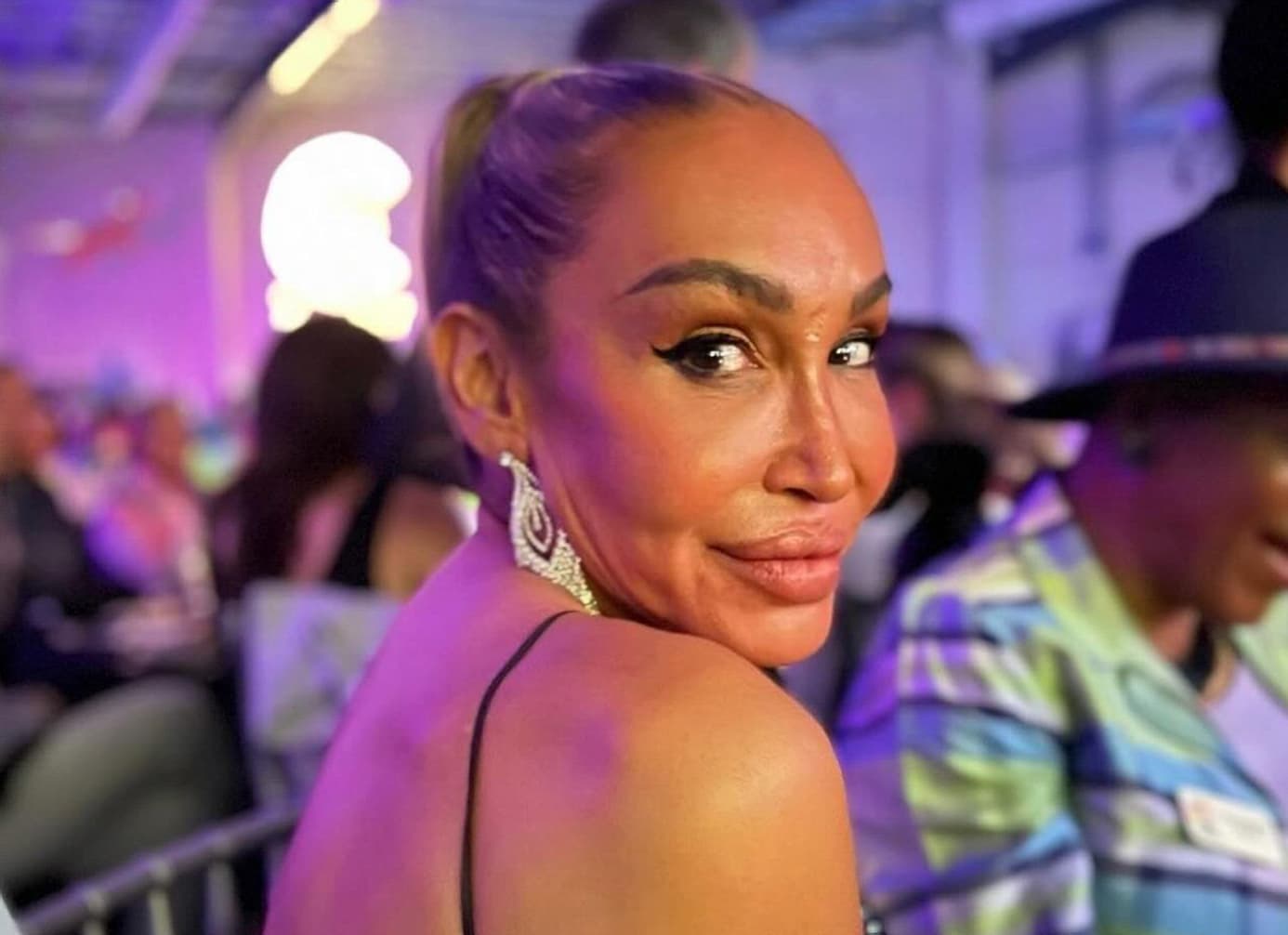
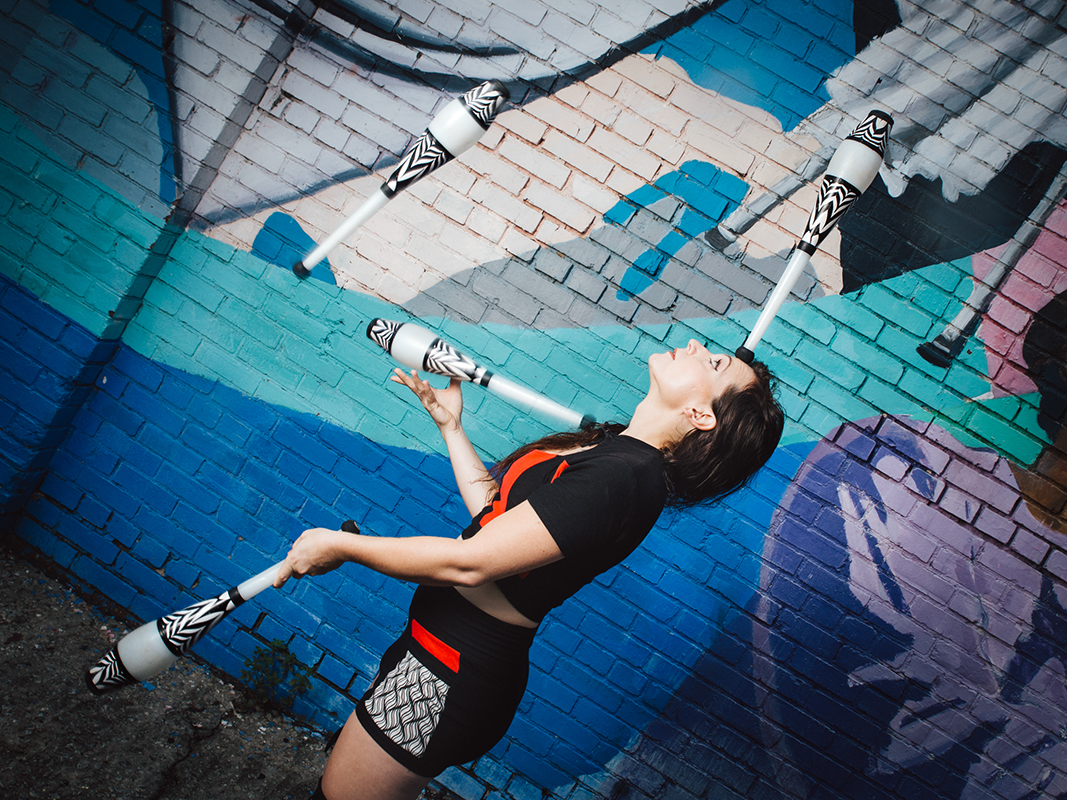
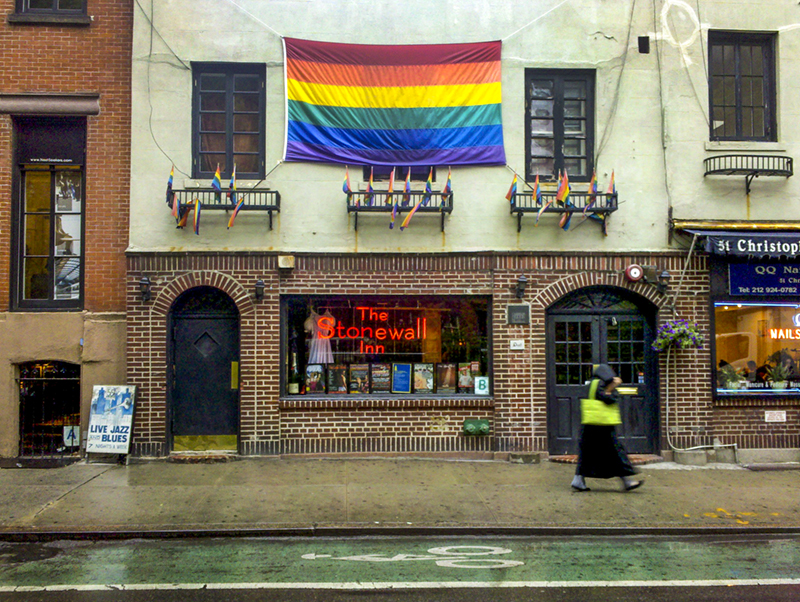













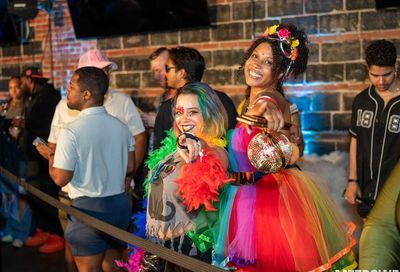
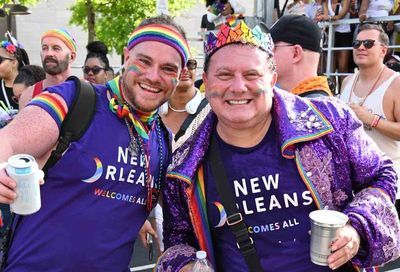
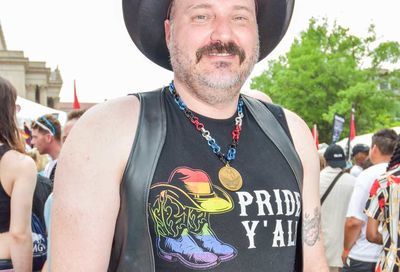
You must be logged in to post a comment.